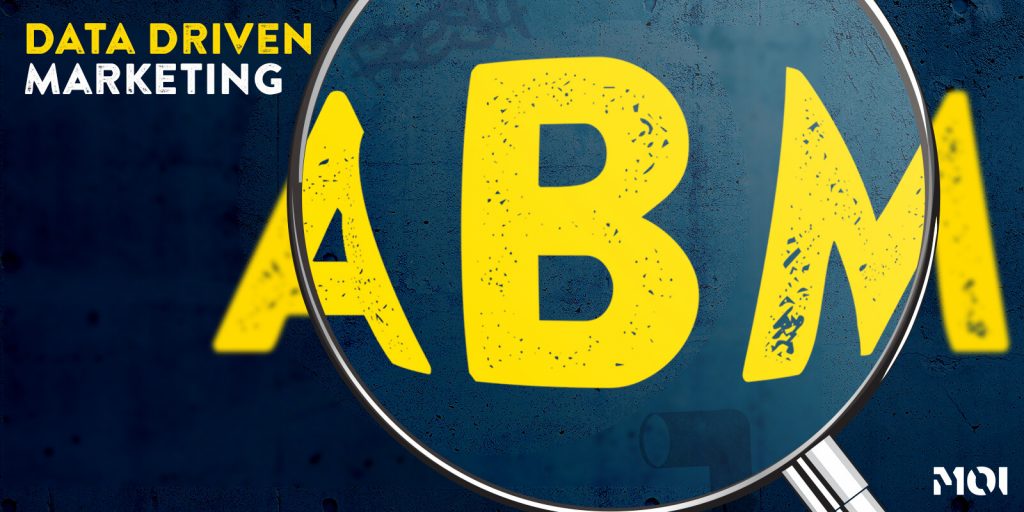2 min read

With GDPR putting greater restrictions on how marketers collect and use people’s personal data, now’s the time to think seriously about your data-driven marketing (DDM) strategy. But GDPR is far from the only reason to take part in DDM.
DDM isn’t complicated – it’s simply segmenting your data based on trends and insights. This may be using a predictive marketing platform to uncover intent across your targets and/or customers; or looking at, and analysing, the trends within your own CRM. Ultimately this will lead us down a number of paths: segment marketing [a cluster of accounts that have something particular in common]; vertical marketing [a specific industry] and ABM [a highly targeted 1:1 approach]
To explore the merits of DDM in full, I’m going to look at it through the lens of the latter, ABM, since this is something that continues to be a hot topic of debate.
Defining ABM
Account-based marketing is not just a programme but a journey. Before you take your first step, however, you must first work out what it means for your organisation.
When I sat down with Gemma Davies (Director of Global ABM Strategy, ServiceNow) and Matthew Stevens (MD, MOI Global), we discussed what ABM actually is and how it can be done properly.
One of the barriers to a successful campaign is that people have many different names for ABM. “Some organisations refer to scalable ABM as what would traditionally be known as mass marketing,” says Matt. “I think ABM is a bit of a dirty word right now, for that reason.”
We quickly came to a consensus that modern scalable ABM, or ‘one-to-many’ is, in fact, another subset of the wider concept of data-driven marketing – if this is what you’re doing then it’s a legitimate strategy in its own right, but just recognise what it is and don’t waste time trying to realign your organisation to one-to-one ABM if that’s not what you’re really trying to do.
Account-based marketing isn’t new, but modern technology now lets us sift through and analyse large volumes of data quickly and efficiently. It can do much of the heavy lifting and provide us with incredibly detailed insights into target accounts. You can really start to get a clear picture of where a potential (or even existing) account is in their buying cycle, and then get the right message in front of them at the right time.
You can’t do ABM without data, but there’s no reason to be put off by all the talk around ‘predictive’ and new technology. Just focus on getting the basics right first, and then work out what tools you need. Remember: strategy first, technology second.
“Don’t be afraid to test different technologies,” says Gemma Davies. “There are so many great things on the market right now, and it’s a great opportunity to really engage these experienced vendors.”
For the full highlights of my ABM chat with Matt and Gemma, check out this infographic.
In my next blog, I’ll be sharing an example of how putting ABM into practice generated one tech company a pipeline in the 10s of $millions and 400% of their target, and bagged us Gold in the International B2B Marketing Awards.
Related content









